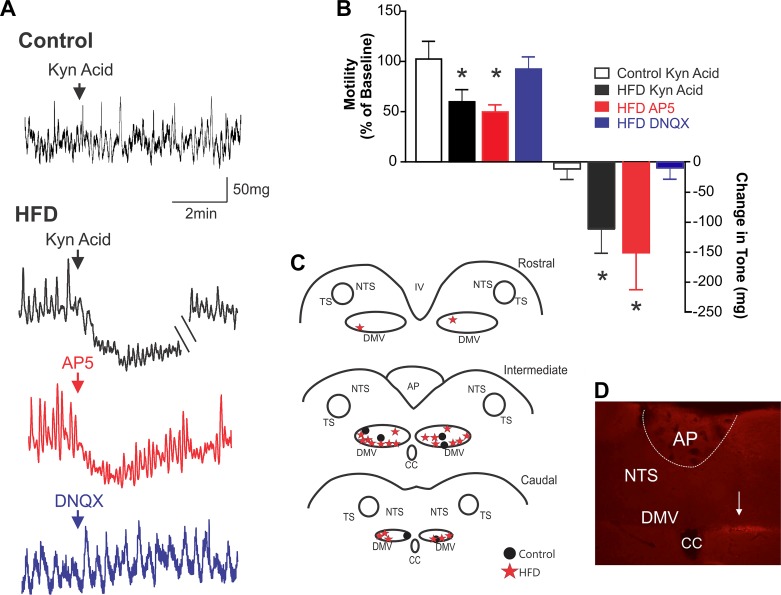Fig. 5.
Brainstem microinjection of ionotropic glutamate receptor antagonists inhibits gastric tone and motility in acute high-fat diet (HFD) rats. A: representative recording demonstrating that dorsal vagal complex (DVC) microinjection of the nonselective glutamate receptor antagonist, kynurenic acid (100 pmol/60 nl) had no effect on antrum tone or motility in control diet rats (top). In contrast, DVC microinjection of kynurenic acid (100 pmol/60 nl; black trace), amino-5-phosphonopentanoate (AP5) (500 pmol/60 nl; red), but not 6,7-dinitroquinoxaline-2,3-dione (DNQX) (10 pmol/60 nl; blue), significantly inhibits antrum tone and motility in acute HFD rats. B: graphical representation of effects of brainstem microinjection of glutamate receptor antagonists on antrum motility (left) and tone (right) (n = 3–8 per data point; *P < 0.05 vs. baseline; paired Student’s t-test). C: map illustrating all brainstem microinjection sites, divided into rostral (top), intermediate (middle), and caudal (bottom) areas. Note that, for the sake of clarity, injection sites are marked bilaterally although all experiments were conducted using microinjections into the left DVC because recordings of motility and tone were made from the ventral stomach. D: photomicrograph illustrating a brainstem microinjection (arrow) at the level of the intermediate DVC. AP, area postrema; NTS, nucleus tractus solitarius; DMV, dorsal motor nucleus of the vagus; CC, central canal.

